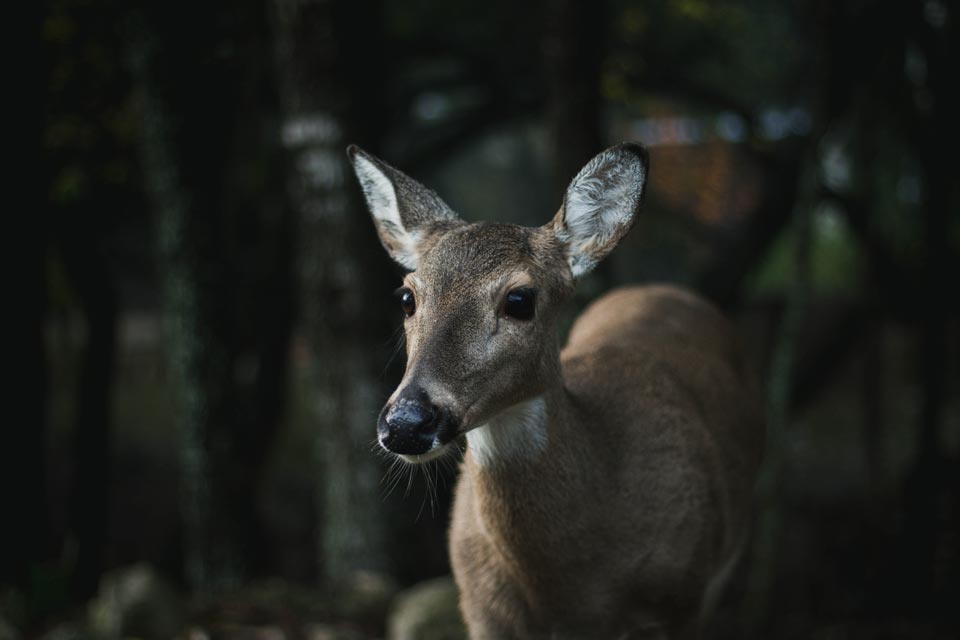The Deer-Forest Study is about more than deer. Whenever I give presentations, everyone wants to see the cool GPS collar videos showing deer movements, especially bucks.
But when I begin my talk, the audience has to endure this slide first.
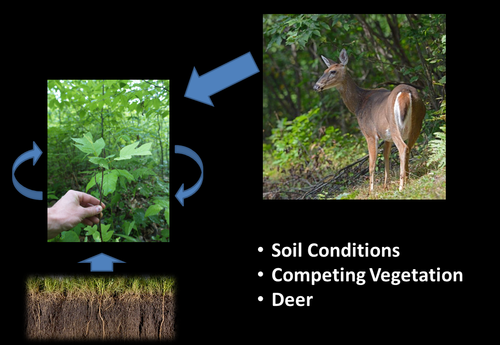
Deer movements are cool and all but the Deer-Forest Study is looking at a bigger picture – investigating the effects of soil, deer herbivory, and competing vegetation on forest vegetation conditions.
Are there other factors to consider? Sure, lots of them. But we don’t have unlimited time and money and these 3 factors are commonly identified by researchers and managers as important problems affecting our forests.
So let’s dive into some of what we have started to learn about our study areas – other than deer.
Danielle Begley-Miller (Ph.D. graduate student on the project) collected soil samples from study plots on the Rothrock and Bald Eagle state forest study areas. Samples were collected for the organic and mineral soil layers and sent to the USDA National Soil Survey Center in Lincoln, NE. So far only the pH values are in but samples are also being tested for Ca-Al ratios; Mg, K, and P content, etc.
But before we show you the results, a little refresher on pH and a primer on how it affects forest vegetation.
You may recall from your science class in high school, pH = 7.0 is neutral. When the pH > 7.0 conditions are basic (think soap), and when pH < 7.0 conditions are acidic. Lemon juice has a pH of 2. The pH level affects how cations like calcium (Ca), magnesium (Mg), and potassium (K) [all important plant and animal nutrients!] move among the soil, plants, and water. The lower the pH the more these nutrients are leached from plants and soil and lost to the system.
Here’s why all that’s important and what happens to plants as pH declines below 7.0:
- pH = 7.0 – 5.0 Ca is the primary nutrient that is leached but there are no limitations to plant growth
- pH = 5.0 – 4.3 Ca, Mg, and K are leached and non-tolerant plants suffer from Aluminum (Al) toxicity. What happens at these pH levels is that Al dissolves to serve as the exchangeable cation (instead of Ca, Mg, and K) and is taken up by plants. The least tolerant plants begin to suffer from this poisoning.
- pH = 4.3 – 3.0 Al becomes the dominant cation and all plants suffer from Al toxicity.
- pH < 3.0 Iron (Fe) and Hydrogen (H) are the dominant exchangeable cations. Only plants rooting in the top organic layer survive. Think acid mine drainage!
Here’s what Danielle found for the mineral layer on her plots (results are very similar for the organic layer).
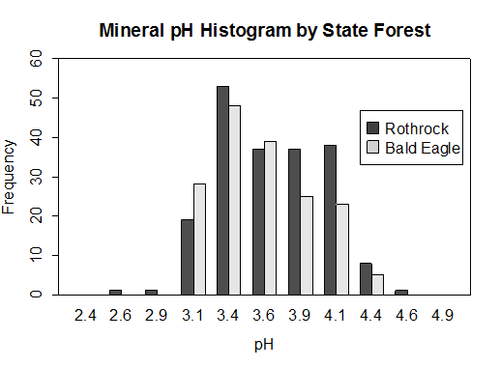
The pH of the soils on our southern study areas range from 3.0 to 4.5. That would suggest nearly all plants suffer from aluminum toxicity.
This would mean slower growth and lower nutrient quality of plants for deer. We have had several recent posts on the importance of nutrition to deer.
Danielle also conducted some preliminary analyses of the occurrence of different plant species that are preferred or avoided by deer and interfere with tree seedling growth.
This is where it starts to get interesting.
Mountain laurel (Kalmia latifolia) hosts our state’s flower. It’s beautiful but terrible deer food. It also inhibits growth of tree seedlings because it shades them out.
The graph below shows that the lower the soil pH the more likely you are to find mountain laurel.
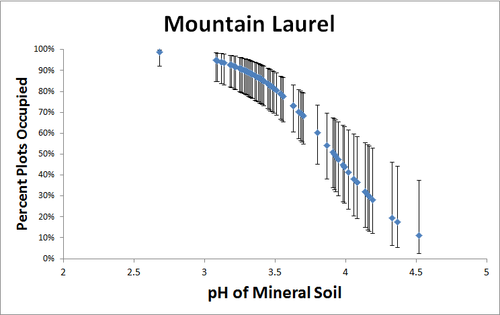
Hay-scented fern (Dennstaedtia punctilobula) is another species of “competing vegetation” that appears to be adaptable to acidic soils. It forms dense root mats that can chemically inhibit tree seedling growth besides simply taking up space to prevent seedlings from growing.
As soil pH increases you are more likely to encounter hay-scented fern. Just keep in mind, all our soils are acidic and the opposite relationships between hay-scented fern and mountain laurel may be an interaction between the two species (something Danielle needs to explore!).
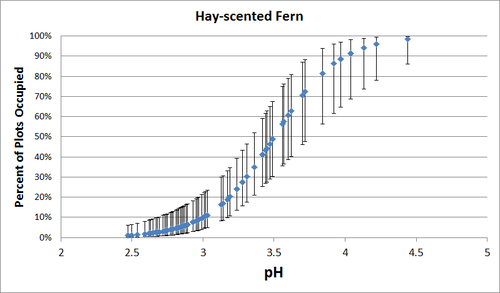
It’s pretty clear from these models that pH does a great job of explaining the variation in the presence of at least these two species. This would suggest that perhaps soil, not deer’s discriminating and selective palate, as the problem.
But take a look at where Indian cucumber (Medeola virginiana) is found. This species is tolerant of acidic soil conditions. Instead of soil pH, Danielle found that this species is more abundant in locations where it is one of many other plants present. (On each plot Danielle measured percent cover of all plant species at different heights (e.g. low herbs, shrubs, small seedlings, etc.) – it’s why percent cover on the x-axis of the graph exceeds 100%.)
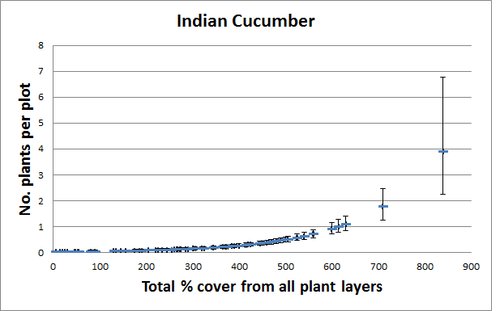
Indian cucumber is a preferred plant by deer (and it’s named for a reason – the root is edible and tastes like cucumber!). Our explanation for the relationship is that where Indian cucumber grows among lots of other plants, it gets missed by deer. Kind of like herding behavior in a prey species – if you’re one of many, you’re less likely to get killed.
Understanding soil conditions is critical to understanding our forests. When the dog traipses through the house with muddy paws, we call it dirt but it is so much more.
It’s why the soil scientists in our department call it the “Source of Life.” We have a lot more to learn about the soils on our study areas. The Bureau of Forestry has provided additional support for a graduate student to look at soils across all four study sites – not just the two (Rothrock and Bald Eagle state forests) that Danielle is working on.
These findings cast further doubt in my mind about legacy effects from long-term deer herbivory. While deer browsing might have opened the door, the abundance of mountain laurel today probably says more about the soils than about deer.
Remember this post?
Soil appears to be a vital team player. But one player does not a team make. How does it fit with the rest of the lineup? How does it mesh with other all-stars like deer browsing and competing vegetation?
Just look at hay-scented fern, mountain laurel, and Indian cucumber root. There is a chemistry among players that we need to understand. It’s why I always show this slide.

-Duane Diefenbach
Photo credit: white-tailed deer – PGC
